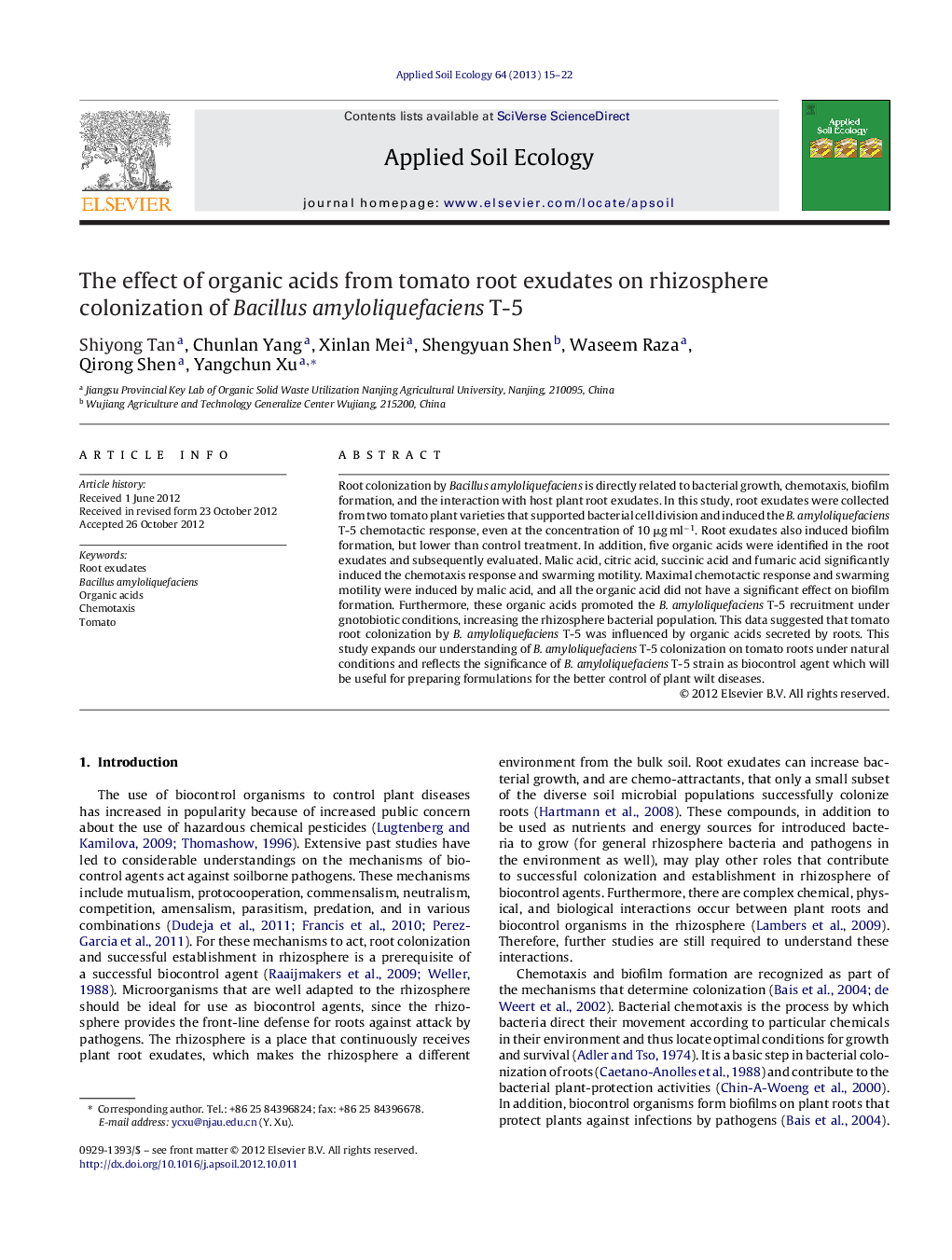| Article ID | Journal | Published Year | Pages | File Type |
|---|---|---|---|---|
| 4382452 | Applied Soil Ecology | 2013 | 8 Pages |
Root colonization by Bacillus amyloliquefaciens is directly related to bacterial growth, chemotaxis, biofilm formation, and the interaction with host plant root exudates. In this study, root exudates were collected from two tomato plant varieties that supported bacterial cell division and induced the B. amyloliquefaciens T-5 chemotactic response, even at the concentration of 10 μg ml−1. Root exudates also induced biofilm formation, but lower than control treatment. In addition, five organic acids were identified in the root exudates and subsequently evaluated. Malic acid, citric acid, succinic acid and fumaric acid significantly induced the chemotaxis response and swarming motility. Maximal chemotactic response and swarming motility were induced by malic acid, and all the organic acid did not have a significant effect on biofilm formation. Furthermore, these organic acids promoted the B. amyloliquefaciens T-5 recruitment under gnotobiotic conditions, increasing the rhizosphere bacterial population. This data suggested that tomato root colonization by B. amyloliquefaciens T-5 was influenced by organic acids secreted by roots. This study expands our understanding of B. amyloliquefaciens T-5 colonization on tomato roots under natural conditions and reflects the significance of B. amyloliquefaciens T-5 strain as biocontrol agent which will be useful for preparing formulations for the better control of plant wilt diseases.
► Bacterial growth, chemotaxis, biofilm formation were evaluated in root exudates. ► Five organic acids were identified in both tomato cultivars. ► Chemotaxis of Bacillus strain induced by organic acids was proved. ► Organic acids affected the colonization. ► We provided some evidence for the interaction between plant and microbes.
